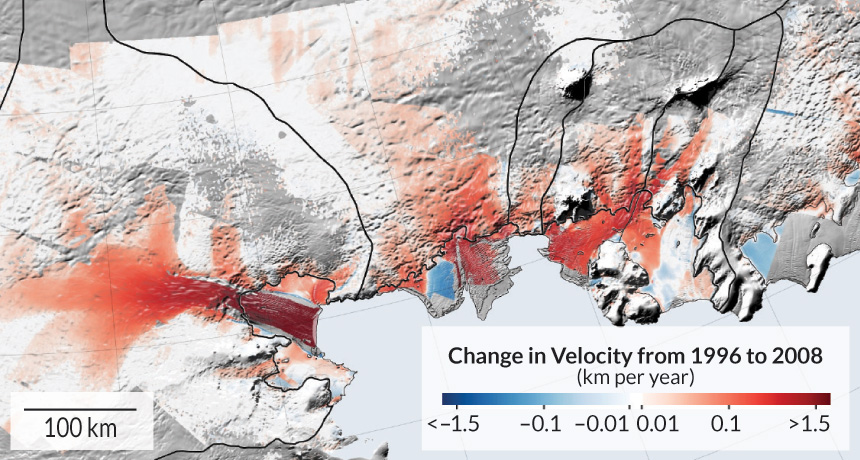
SPEED UP The collapse of West Antarctica’s glaciers may be unavoidable, and the ice sheet’s demise could raise global sea level by as much as 4 meters, researchers reported. In recent years, the flow of these glaciers into the ocean has largely accelerated (red), which exacerbates melting.
J. Mouginot et al/Geophysical Research Letters 2014